#indianpainter
Explore tagged Tumblr posts
Text



A Bird 🕊️ without Eye. Watercolor painting by Moazzambeg Mirza.
A delicate watercolor painting of a vibrant blue bird perching on a branch. 🐦 I captured the soft, airy brushstrokes and whimsical spirit of this little feathered friend.
#watercolorpainting #birdart #bluebird #natureart #watercolorbird #artoftheday #artistoninstagram #artistmoazzambegmirza #watercolorartist #watercolor #birdphotography #birdpainting #birdart
#artbymoazzammirza#artistmoazzambegmirza#indianpainter#watercolorartist#natureart#penart#watercolorart#watercolorpainting#inkpenarts#watercolor#birds#birds photography#indian artist moazzambeg mirza#artist biography#artists on tumblr
4 notes
·
View notes
Text
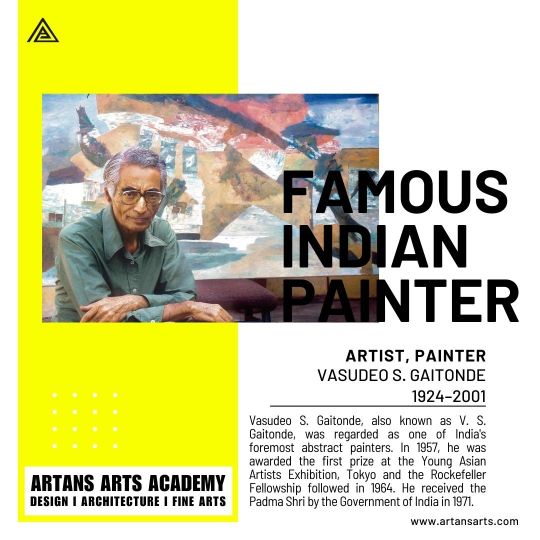
Famous Indian Painter
#artansartsacademy#designinstitute#famousindianpainters#indianpainter#vasudeogaitonde#awardwinners#PadmaShriAward#abstractpainters#GovernmentofIndia#painters#artwork#artist#explore#skills#facebookpost#famouspainter#indianartwork#youngasianartist#kota#design#fashion#finearts
0 notes
Text
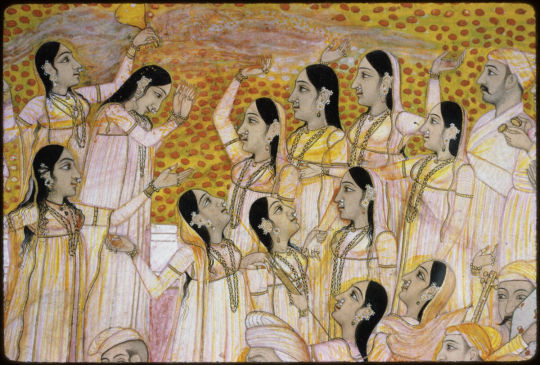
Happy Holi!
The spring "Festival of Colors" has been a popular subject of Indian painting for centuries; here is a detail of a relatively large panoramic scene produced at the court of the Nawabs of Avadh in present-day Uttar Pradesh in the 1760s:
'Celebrating Holi,' Avadh, c. 1760-1764 Harvard Fine Arts Library, Special Collections SCW2016.12421
#Holi#AvadhiPainting#IndianPainting#IndianArt#1760s#DigitalImages#HarvardFineArtsLibrary#HarvardLibrary
47 notes
·
View notes
Text
What is Pichwai Painting? A Timeless Indian Art Form
Pichwai painting, an exquisite art form with roots in India’s rich cultural heritage, is much more than just a decorative piece. Derived from the Sanskrit words "Pichh" (back) and "Wai" (hanging), Pichwai literally translates to “hanging at the back.” Traditionally, these paintings were created to adorn the walls of temples, particularly behind the idol of Lord Krishna in the temple of Shrinathji in Nathdwara, Rajasthan.

Origins of Pichwai Art
Pichwai paintings date back over four centuries and are deeply connected to the worship of Lord Krishna, particularly his manifestation as Shrinathji. This art form was developed to narrate the tales of Lord Krishna’s life, his leelas (divine acts), and the festivals associated with him. Over time, these paintings transitioned from temple art to becoming cherished collectibles for art connoisseurs.
Characteristics of Pichwai Paintings
Themes: The paintings often depict scenes from the life of Lord Krishna, particularly his role as the cowherd of Vrindavan. Themes include festivals like Janmashtami, Raas Leela, Annakut, and Sharad Purnima.
Vivid Detailing: Intricate motifs such as lotus flowers, cows, peacocks, and trees are common, reflecting the idyllic beauty of Krishna’s life in Vrindavan.
Rich Colors: Natural dyes are traditionally used to create vibrant hues that lend a timeless appeal to the artwork.
Medium: Pichwai is typically created on cloth or canvas, with some paintings being adorned with gold or silver leaf for added grandeur.
The Art of Crafting Pichwai Paintings
Creating a Pichwai painting is an intricate process requiring immense skill and patience. Artists meticulously hand-paint these masterpieces using fine brushes, ensuring that every detail stands out. The process can take weeks, sometimes months, depending on the complexity of the design.
Cultural and Spiritual Significance
Pichwai art is not just about aesthetics; it holds deep spiritual significance. The paintings are considered a medium to connect devotees with the divine, making them an integral part of religious rituals and celebrations.
Modern Adaptations
While rooted in tradition, Pichwai art has evolved over the years. Contemporary artists have introduced modern elements, making the paintings suitable for diverse settings, including homes, offices, and galleries. The fusion of traditional motifs with modern techniques has further popularized this art form globally.

Why Choose Pichwai for Your Space?
Pichwai paintings bring a sense of serenity, elegance, and cultural richness to any space. Whether you’re looking to add a touch of Indian heritage to your home or want a conversation starter for your office, these paintings are a timeless addition to your decor.
Explore the World of Pichwai Art with Wall Curry
At Wall Curry, we celebrate the beauty of Pichwai art by offering curated designs that combine tradition with modernity. Our collection reflects the craftsmanship and devotion that this art form embodies.
Visit Wall Curry’s Pichwai Collection to discover how these paintings can transform your space and connect you to a centuries-old tradition
#PichwaiPainting#IndianArt#TraditionalArt#CulturalHeritage#Shrinathji#RajasthanArt#WallDecor#HandmadeArt#TempleArt#ArtAndCulture#LotusMotifs#LordKrishna#HomeDecorIdeas#IndianPainting#ArtCollectors#WallCurry#PichwaiArt#SpiritualArt#ModernArtFusion#HeritageArt
0 notes
Text
Traditional & Folk Indian Paintings | Archer Art Gallery
Classical and folk paintings such as miniatures, Pichwai, Madhubani, Kalighat and others are available for sale at Archer Art Gallery. Free shipping is available.
0 notes
Text
🎨 Dive into the mesmerizing world of Indian paintings! 🌟 From delicate miniatures to vibrant Madhubani art, each style carries a unique story. 🖌️ Explore the different styles of Indian paintings and discover the beauty of Indian art. ✨
0 notes
Text
A brief history of Indian painting: from Traditional to Modern Art
Introduction
Indian paintings have a long and varied history that spans ages and includes a wide range of styles and techniques. Indian paintings have changed and adapted to different times and influences, from delicate and detailed miniatures to the vibrant and colourful modern works of contemporary painters.
The origins of Indian paintings can be traced back to ancient times, when early civilizations created cave paintings and rock art. Indian paintings evolved a distinct style and purpose over time, reflecting the region's cultural, religious, and social traditions.
The entry of the British into India in the 18th century, however, brought about considerable changes in the art landscape. Indian art became a mix of traditional and modern styles when Western techniques and styles were added to it.
Traditional Indian Painting Styles
Indian paintings have a long and varied history, with traditional styles evolving over time. These styles represent the region's cultural, religious, and social traditions and have played a significant part in shaping India's cultural identity.
Miniature painting is one of the most important traditional Indian painting genres and was popularised in Mughal courts.
The courtly style, which originated in several regions of India throughout the mediaeval period, is another prominent traditional Indian painting style. These paintings were made for royal courts and represented scenes from court life such as hunts, processions, and conflicts. With rich colours and exquisite decorations, the courtly style was highly stylized and beautiful.
Regional styles have also had an impact on Indian paintings. Various parts of India developed distinct styles that were influenced by local customs, beliefs, and aesthetic traditions. The Rajasthani painting style, for example, was noted for its bold colours and highly stylized figures, whilst the Pattachitra painting style from Odisha was recognised for its complex line work and bright colours.
Traditional Indian painting techniques are significant because they capture the essence of Indian culture and history. These paintings have contributed significantly to the preservation of India's aesthetic legacy and traditions, and they continue to inspire current Indian painters today.
Traditional paintings you can buy from Satguru’s
Ghat panel
Kathakali
Radha Krishna Madhubani Painting
Roop Chandan
Harishchandra Ghat
Rise of modern Indian paintings
The British establishment of art schools was a major contributor to the emergence of contemporary Indian art. Institutes, such as the Bombay Art School, gave Indian artists access to Western art instruction and techniques, fostering a new generation of painters capable of creating works that combined traditional and modern aspects.
The Western influence also brought about a new way of thinking about art and its place in society. Indian artists began experimenting with new forms and styles, combining elements of Western art with traditional Indian folk art and crafts.
The rise of modern Indian art paralleled the Indian independence struggle, as artists strove to create works that reflected the social and political developments taking place in India at the time. They used art as a form of protest and action to confront issues like poverty, social inequity, and political corruption. A new generation of Indian artists emerged as a result of the combination of traditional and modern components, as well as a new way of thinking about art and its function in society.
Modern paintings you can buy from Satguru’s
ABS Red
Warrior Horse
Lady W. Bubble
Abstract Horizontal
Men In Line
Conclusion
The development of Indian paintings from miniatures to modern art reflects India's rich cultural heritage and aesthetic traditions. If you are looking to buy paintings for your home, you can get all the paintings mentioned above on Satguru’s. They are a home decor shop based in Mumbai with both physical and online stores having a broad range of both traditional and modern paintings. Aside from paintings, you can also buy candle holders, vases, and the best wall hangings for your living room, or art statues and wall clocks for your room. Whether you want to buy it for yourself or gift it to a loved one, Satguru’s is an ideal place to buy decor items. Visit their website to learn more about their products and delivery services.
A brief history of Indian painting: from Traditional to Modern Art
Introduction
Indian paintings have a long and varied history that spans ages and includes a wide range of styles and techniques. Indian paintings have changed and adapted to different times and influences, from delicate and detailed miniatures to the vibrant and colourful modern works of contemporary painters.
The origins of Indian paintings can be traced back to ancient times, when early civilizations created cave paintings and rock art. Indian paintings evolved a distinct style and purpose over time, reflecting the region's cultural, religious, and social traditions.
The entry of the British into India in the 18th century, however, brought about considerable changes in the art landscape. Indian art became a mix of traditional and modern styles when Western techniques and styles were added to it.
Traditional Indian Painting Styles
Indian paintings have a long and varied history, with traditional styles evolving over time. These styles represent the region's cultural, religious, and social traditions and have played a significant part in shaping India's cultural identity.
Miniature painting is one of the most important traditional Indian painting genres and was popularised in Mughal courts.
The courtly style, which originated in several regions of India throughout the mediaeval period, is another prominent traditional Indian painting style. These paintings were made for royal courts and represented scenes from court life such as hunts, processions, and conflicts. With rich colours and exquisite decorations, the courtly style was highly stylized and beautiful.
Regional styles have also had an impact on Indian paintings. Various parts of India developed distinct styles that were influenced by local customs, beliefs, and aesthetic traditions. The Rajasthani painting style, for example, was noted for its bold colours and highly stylized figures, whilst the Pattachitra painting style from Odisha was recognised for its complex line work and bright colours.
Traditional Indian painting techniques are significant because they capture the essence of Indian culture and history. These paintings have contributed significantly to the preservation of India's aesthetic legacy and traditions, and they continue to inspire current Indian painters today.
Traditional paintings you can buy from Satguru’s
Ghat panel
Kathakali
Radha Krishna Madhubani Painting
Roop Chandan
Harishchandra Ghat
Rise of modern Indian paintings
The British establishment of art schools was a major contributor to the emergence of contemporary Indian art. Institutes, such as the Bombay Art School, gave Indian artists access to Western art instruction and techniques, fostering a new generation of painters capable of creating works that combined traditional and modern aspects.
The Western influence also brought about a new way of thinking about art and its place in society. Indian artists began experimenting with new forms and styles, combining elements of Western art with traditional Indian folk art and crafts.
The rise of modern Indian art paralleled the Indian independence struggle, as artists strove to create works that reflected the social and political developments taking place in India at the time. They used art as a form of protest and action to confront issues like poverty, social inequity, and political corruption. A new generation of Indian artists emerged as a result of the combination of traditional and modern components, as well as a new way of thinking about art and its function in society.
Modern paintings you can buy from Satguru’s
ABS Red
Warrior Horse
Lady W. Bubble
Abstract Horizontal
Men In Line
Conclusion
The development of Indian paintings from miniatures to modern art reflects India's rich cultural heritage and aesthetic traditions. If you are looking to buy paintings for your home, you can get all the paintings mentioned above on Satguru’s. They are a home decor shop based in Mumbai with both physical and online stores having a broad range of both traditional and modern paintings. Aside from paintings, you can also buy candle holders, vases, and the best wall hangings for your living room, or art statues and wall clocks for your room. Whether you want to buy it for yourself or gift it to a loved one, Satguru’s is an ideal place to buy decor items. Visit their website to learn more about their products and delivery services.
#giftaGaneshaidol#Ganeshjipaintings#Ganeshjipaintingsonline#indianpainting#indianpaintingonline#indianpaintingsatgurus#Ganeshaidolonline#Ganeshaidolsatgurus
0 notes
Text
Discover Luxury Pichwai Painting at Angie Homes
Bring home elegant Pichwai paintings that capture tradition and heritage. 🖼️✨ Shop handcrafted luxury at the best prices only at Angie Homes!
LuxuryArt #IndianPaintings #HandmadeArt #PichwaiPainting
Click here to browse: https://youtu.be/pUA3ITh8Mto?si=PSBNvsk6IdlmMjPY
0 notes
Text
Angle Coating 2K PU Clear Matt offers a refined, smooth finish with exceptional durability.

Available size: 1Ltr, 4Ltr, 20Ltr
For Further Details 👇
📱 Call Now: +91 94290 02704 💬 WhatsApp: https://wa.me/919429002704 🌐 Website: https://angelcoating.com/ . . .
#2kpuclearglossy #matt #mattfinish #paintmanufacturer #indianpaints #paintcompany #CoatinginIndia #CoatinginAhmedabad #angel
0 notes
Text


“After two years in London I went to the Northern Industrial city of Leeds to study Town Planning. Leeds was grey and colours became important for me. I painted to communicate with myself.”
(Parfulla Mohanti)
#IndianArtist #IndianPainter #PafullaMohanti #NeoTantricArt
0 notes
Text



Nature landscape, Watercolor art by Artist Moazzambeg Mirza
#WatercolorArt
#WatercolorPainting
#ArtbyMoazzamMirza
#ArtistMoazzambegMirza
#IndianPainter
#WatercolorArtist
#Watercolor
#NatureArt
#PenArt
#InkPenArts
#watercolor
#watercolors
#watercolorart
#watercolorillustration
#watercolortattoo
#watercolorsketch
#watercolorportrait
#watercolorlandscape
#aquarelle
#watercolor_daily
#watercolorlove
#watercolor_art
#paintingwithwatercolors
#watercolorph
#doodles
#watercolorsketchbook
#spokaneart
#arttherapy
#spokaneartist
#artbymoazzammirza#artistmoazzambegmirza#watercolorartist#natureart#penart#watercolorart#watercolorpainting#watercolor#inkpenarts#indianpainter
6 notes
·
View notes
Text
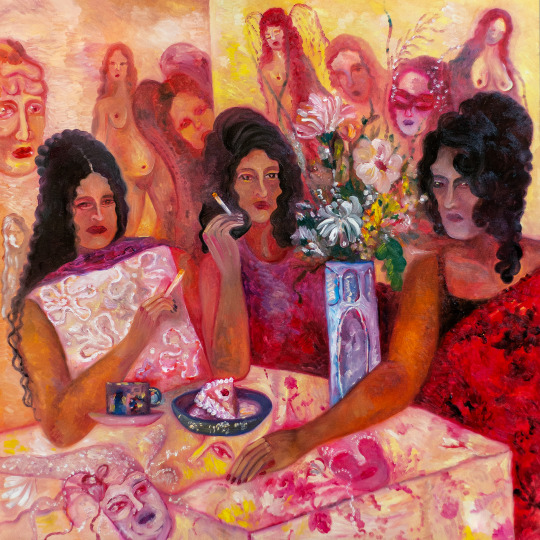
Three friends in bouffants with angels, oil on wood panel, 2021. 24x24 inches. Museum quality prints on German paper available here.
#angels#jamesensor#indianpainter#oil painting#birchboard#oilonpanel#cradled wood#bouffant#retro#vintage#life in india#onceuponatime#friendshipsandmasks#cake#female friendships
7 notes
·
View notes
Text
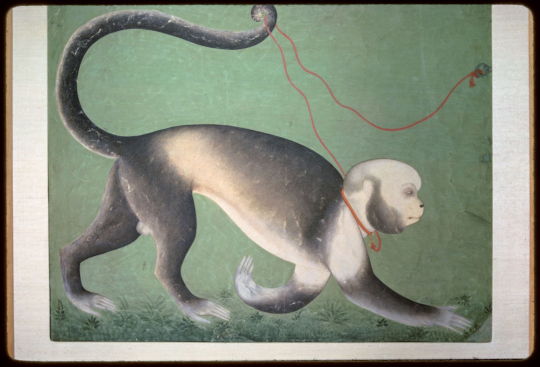
We heard that today is National Monkey Day, and here’s a perfect portrait for this day.
“A monumental portrait of a monkey” from India, circa, 1705-1710.
This strange looking monkey is named Husaini according to the inscription on the back of this work. This is relatively a large-format painting by early modern South Asian standards.
On a fun and lighter pop culture note, a print of this painting appears in the dining room of the family of Devi Vishvakumar, the main character of the Netflix comedy series “Never Have I Ever.” Has anybody noticed that?
A monumental portrait of a monkey The Stipple Master , Mughal painter, active c. 1692-1715 [artist] Mewar, Rajasthan, India ; Alternate: Mewar Princely State ; Alternate: Udaipur Princely State Opaque watercolor and gold on paper 48.5 centimeters; 58.7 centimeters Indian Rajasthani: Mewar c. 1705-1710 Repository: Art Institute of Chicago, Chicago, Cook, Illinois, United States HOLLIS number: 8001311070
This image is part of FAL’s Digital Images and Slides Collection (DISC), a collection of images digitized from secondary sources for use in teaching and learning. FAL does not own the original artworks represented in this collection, but you can find more information at HOLLIS Images.
#NationalMonkeyDay#IndianArt#IndianPainting#Monkey#HarvardFineArtsLibrary#FineArtsLibrary#Harvard#HarvardLibrary#DigitalImages
24 notes
·
View notes
Text

African Tribal Art 🎨
#art#colours#illustration#painting#paint#acrylic paint#pastel#drawing#artwork#indian#african#tribal#ladies#bright#mettalic#indianpainter#artists on tumblr
3 notes
·
View notes
Photo
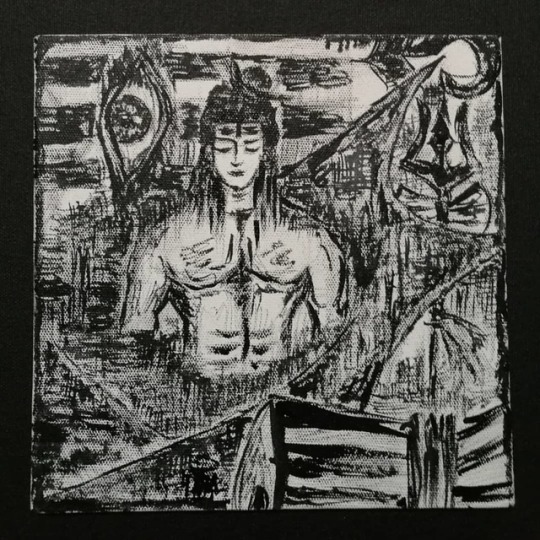
Shiva is one and all. Shiva is everywhere and everything. Dimension: 10x10 . . . #saadhiarts #canvaspainting #artwork #artistsoninstagram #paintings #canvasartwork #paintonstretchedcanvas #instagramartist #homedecor #abstractpaintings #blackandwhitepainting #singlecolorpainting #indianartist #ilovepainting #indianpainter #painterslife #livewithart #shivapainting #indiangod #shivaforlife🙏 (at Bangalore, India) https://www.instagram.com/p/B2ezEVWBCYT/?igshid=1jq7y5hgki6hv
#saadhiarts#canvaspainting#artwork#artistsoninstagram#paintings#canvasartwork#paintonstretchedcanvas#instagramartist#homedecor#abstractpaintings#blackandwhitepainting#singlecolorpainting#indianartist#ilovepainting#indianpainter#painterslife#livewithart#shivapainting#indiangod#shivaforlife🙏
1 note
·
View note
Text
Immerse yourself in the captivating narration of #Ramayana through exquisite Indian paintings! 🎨✨ Let the vibrant colors and intricate details transport you to a bygone era. 🌺✨ Rediscover ancient wisdom and explore the divine journey of Lord Rama and his allies. 🏹✨ Experience art merging with spirituality. 🎨🙏
0 notes